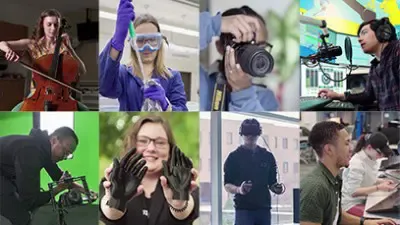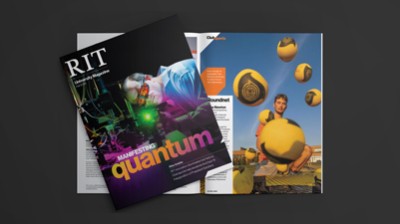Imaging Science Thesis Defense: Scattering Spectroscopy of Granular Media for Remote Sensing Applications

Imaging Science Thesis Defense
Scattering Spectroscopy of Granular Media for Remote Sensing Applications
Chris H. Lee
Imaging Science
Rochester Institute of Technology
Register for Zoom Link Here
Abstract:
The reflectance of a surface depends not only on the physical characteristics of the medium, but also on the geometry of how the surface is illuminated and viewed. Remote sensing data of a surface at multiple illumination and/or viewing angles can provide additional information that we can use to retrieve the physical properties of the surface and/or underlying medium as opposed to remotely sensed data at a single geometry. In this work, I characterized different aspects of angular reflectance, or scattering, spectroscopy of granular media for remote sensing applications. I applied polarimetry to various samples of olivine sand as a function of illumination and viewing angles, the wavelength of light, the angle of linear polarization, and the grain size distribution. My results contradicted the current broadly used polarimetric radiative transfer model by Hapke, and I developed an empirical model that more accurately describes the spectro-polarimetry of granular media as a function of angles and the diffuse reflectance. I also quantified the angular dependence on the reflectance of Spectralon, which is widely used as a diffuse calibration standard and is often modeled as a Lambertian reflector. I extended earlier analyses of Spectralon by including the full azimuthal dimension, making my empirical reflectance model of Spectralon applicable to field imagery. Furthermore, I incorporated the angular dependence of reference targets in hyperspectral imagery for reflectance conversion in an experiment involving hyperspectral and red-green-blue video imaging of a dynamic natural water scene. Finally, I characterized the impact of bright glints on the reflectance of granular media as a function of illumination and viewing geometries, among other medium parameters. I found that the contribution of bright glints to reflectance scales nearly linearly with phase angle, and potential scale issues can arise in remote sensing data of granular media with high spatial resolution.
Intended Audience:
All are Welcome!
To request an interpreter, please visit myaccess.rit.edu
Event Snapshot
When and Where
Who
This is an RIT Only Event
Interpreter Requested?
No









